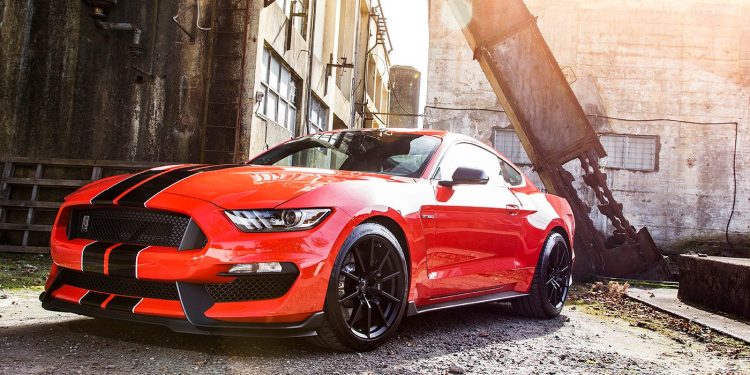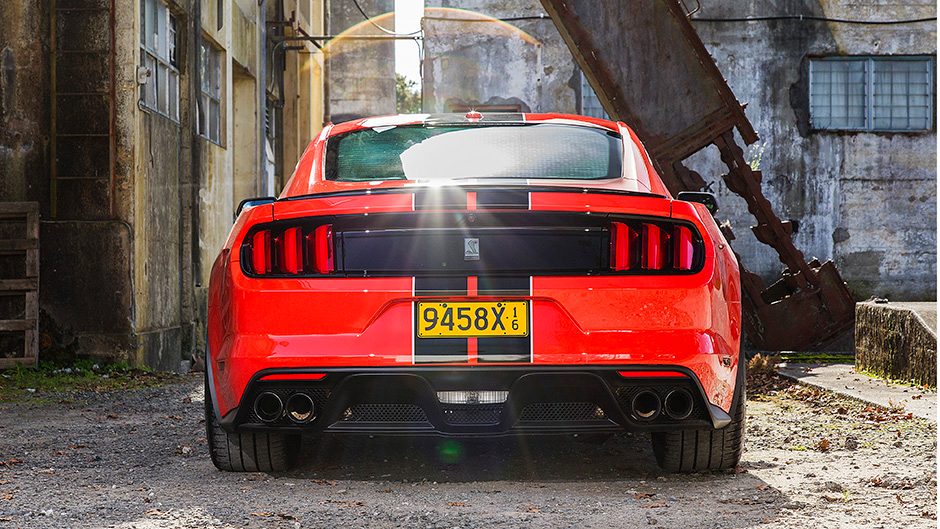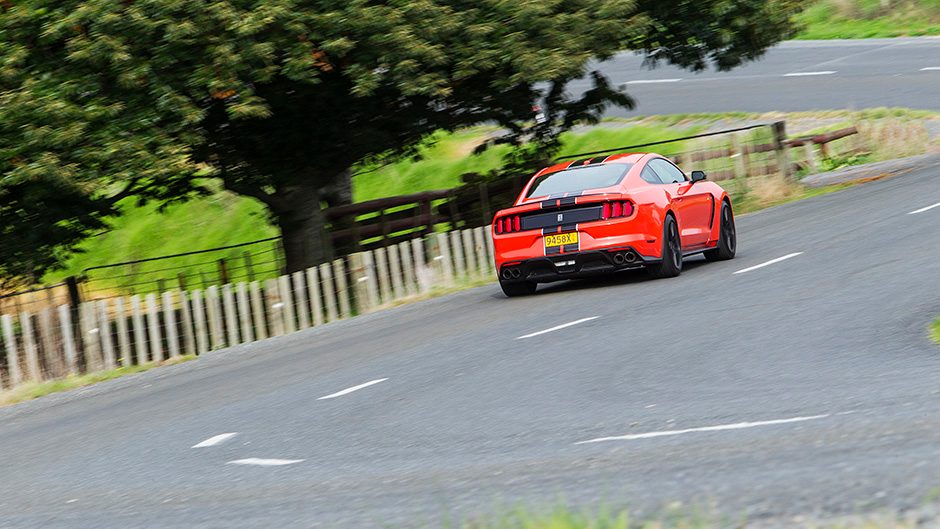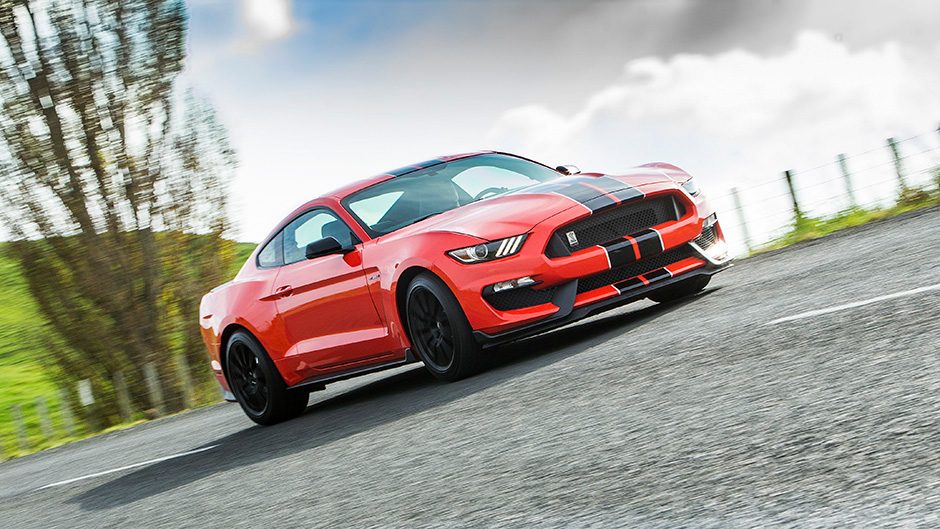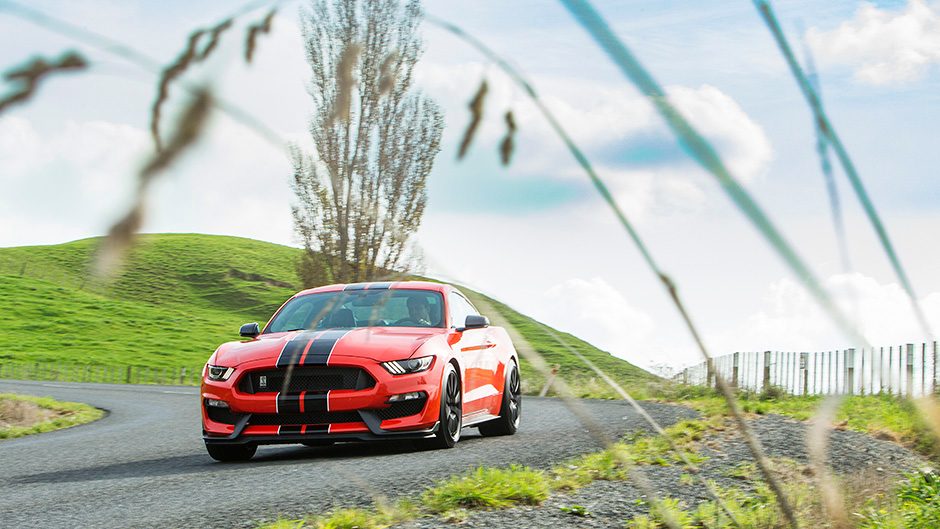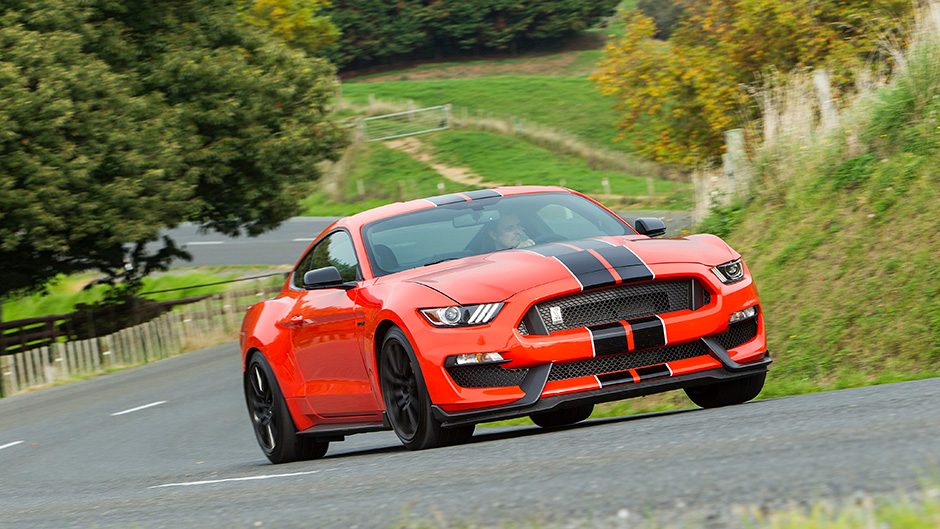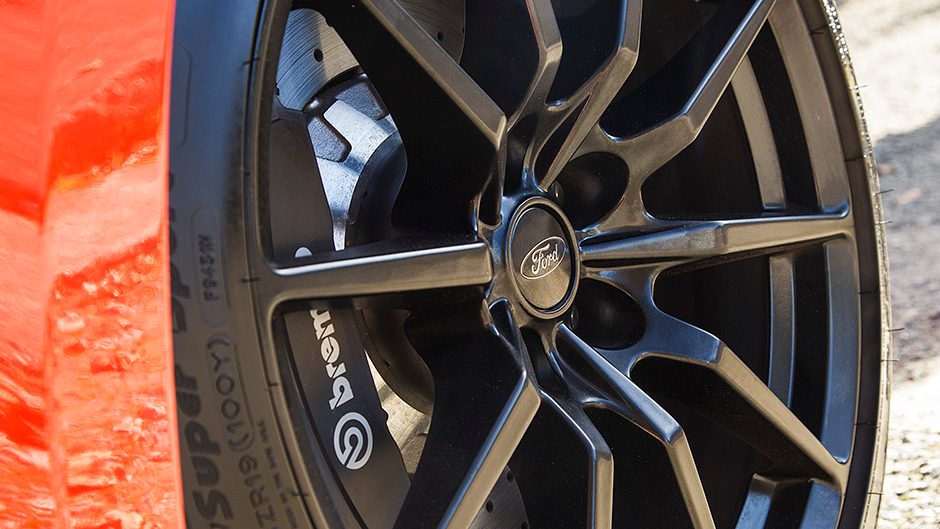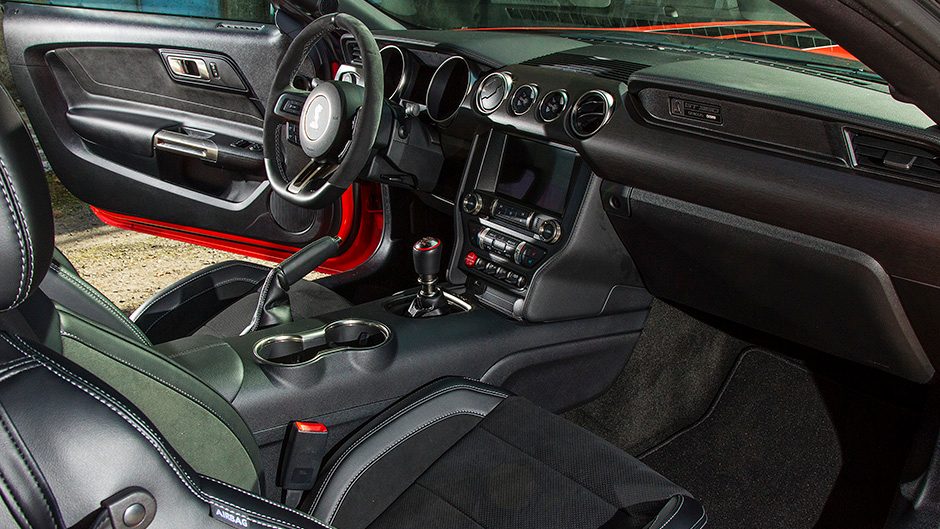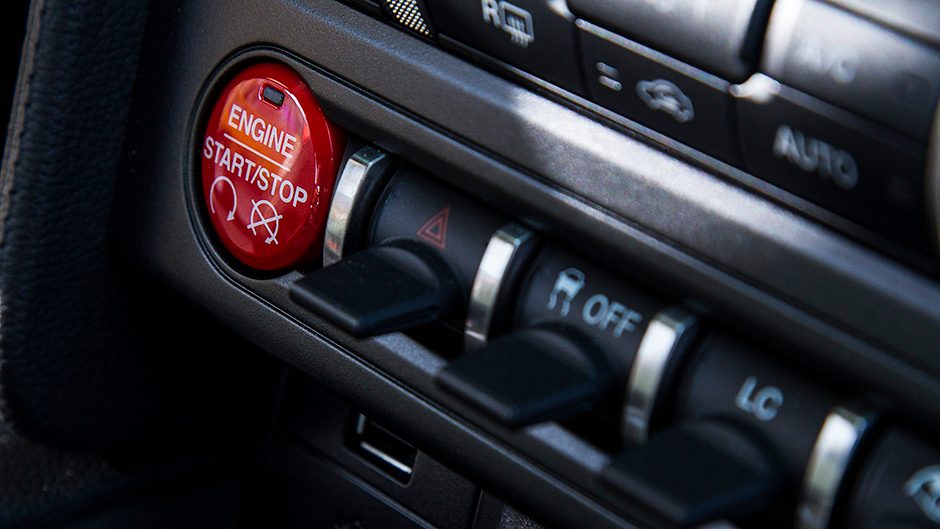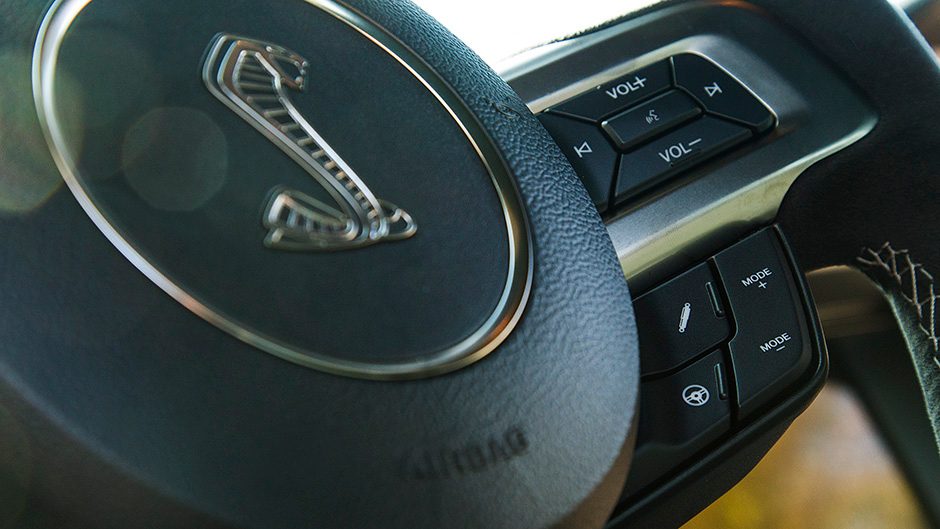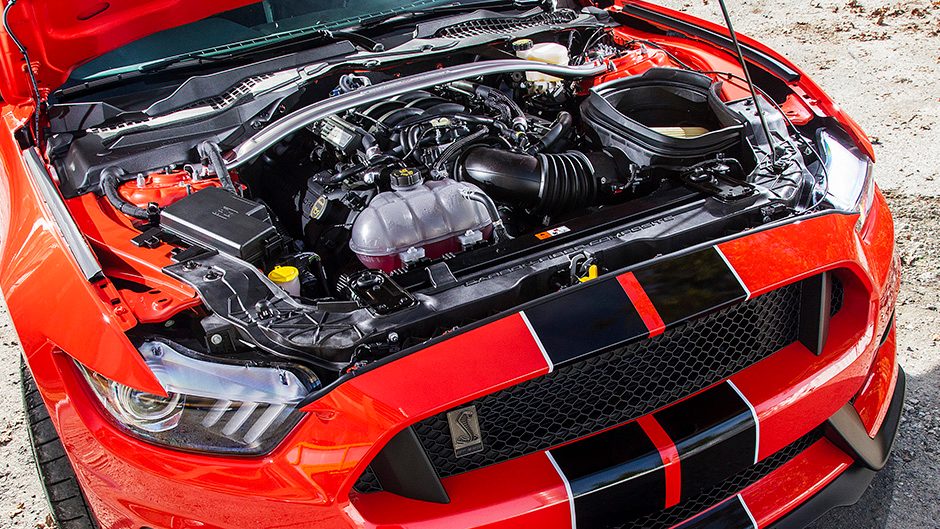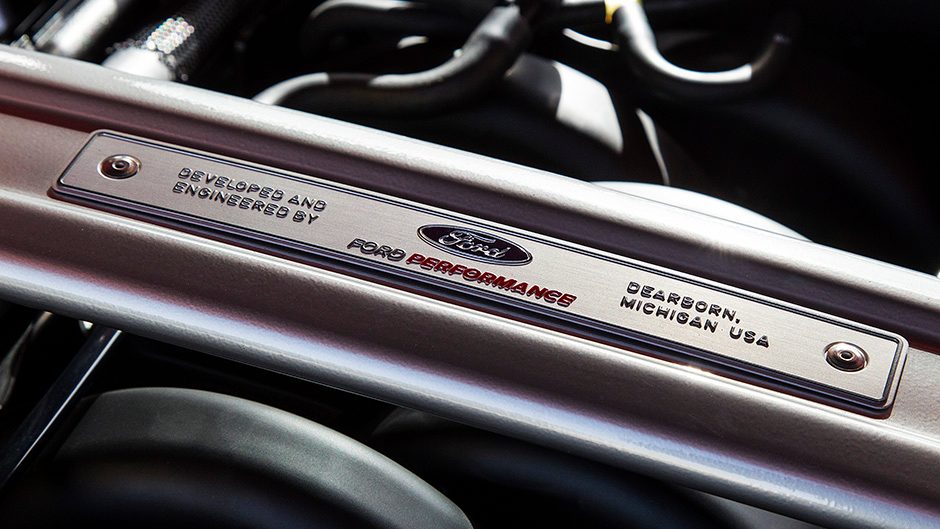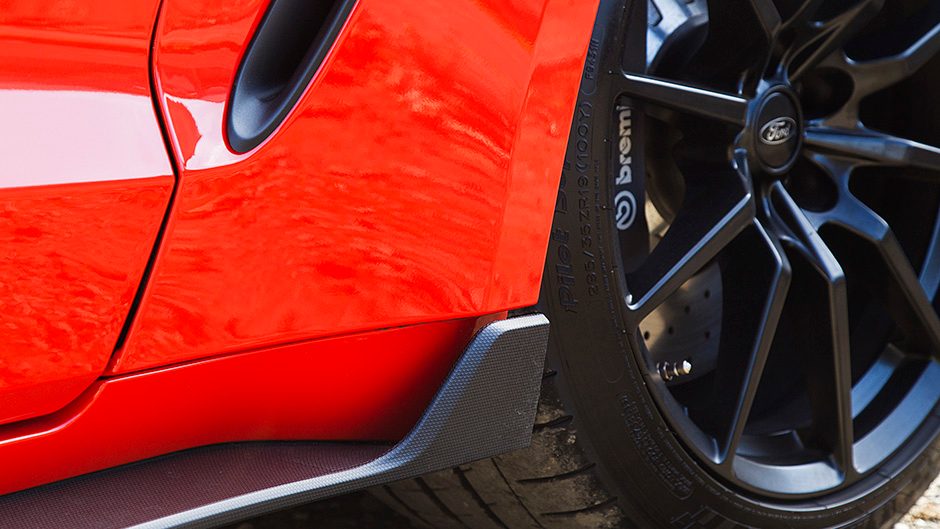2016 Ford Mustang Shelby GT350 review
Words: Kyle Cassidy | Photos: Tom Gasnier
Ford Performance has bred a new snake in the Shelby GT350. While the previous Shelby was all about supercharged grunt, the 350 is more race car than drag star.
If you believe the philosophy that a car is all about its engine, then the Shelby GT350 is one to add to the wanted list. While the focus of a muscle car has always been about what’s under the hood, this one is different. The engine in this new Shelby is actually smaller than the one it effectively replaces in the GT500, and it’s not even blown. And so the latest Shelby GT is not so much a sledgehammer, but more a precision power tool.
Its V8, dubbed Voodoo, is a (serious) development of the 5.0-litre Coyote found in the regular GT. Its key component is its new flat-plane crank, something more synonymous with Ferraris and McLarens than a Ford, and it gives the 350 its sublime soundtrack and an ability to rev all the way to 8250rpm. Ford has modified the head for high revving horsepower with larger valves, high-lift cams and altered valve timing. The cylinders have been bored, lifting capacity to 5163cc and are lined with a special coating, while forged aluminium pistons now live within and the compression ratio has been bumped up to 12.0:1. While the budget didn’t stretch to direct injection, the Voodoo gets long intake runners and a healthy 87mm throttle body feeds from an enlarged intake.
The flat-plane crank, with its 180-degree intervals, sees the firing order alternate evenly between each bank, and this influences the sound this Ford V8 makes. It doesn’t have that burble of your typical all-American eight at idle (most of which run with a regular 90-degree crank) but rather it emits a bassy purr. With four-into-two-into-one headers, minimal cans and an exhaust flap, it doesn’t sound like your usual Yankee as it revs out, yet neither is it titanium pipes exotic either. Think big cube race car and you’re more on the money.
And along those lines, the GT350 has been developed with serious track work in mind and so Ford has honed the aeros, and tweaked the handling department substantially. The 350 gains wheel arch breathers with a vent in both the bumper and the front guard, and there’s a slot in the bonnet to help hot air escape and reduce lift. There’s a new grille and a Shelby lower valance while the boot lip spoiler doesn’t mar the Mustang’s silhouette. Even this colour scheme works with the black wheels and mandatory stripes. There’s an R model which costs quite a bit more, and comes with a bigger aero kit with an additional front splitter and larger rear wing while it gets carbon fibre wheels too.
On that subject, the 350 uses traditional American traction control – masses of wide rubber – with 305/35s on the rear and 295/30s upfront, the stick courtesy of Michelin Pilot Super Sports. To accommodate the bigger treads, Ford has modified the suspension with unique pick-up points, links and solid ball joints up front too. The brakes feature drilled rotors with aluminium hats and six-pot Brembo calipers on the front.

The suspension adopts specific spring rates but also magnetic ride dampers (optional on the 350, standard on R) which are fitted here. These constantly adjust the damping forces on the go, even as the car rounds a bend, and so have a huge influence on the dynamic behaviour of this Mustang. From start up, there’s that terrific note from the pipes, but the biggest surprise is how light the clutch is, needing about as much effort as a Fiesta’s, and the Tremec six-speeder slots first gear easily when still cold; it’s no angry tuner special this one. And then there’s the accommodating urban ride, all things considered; this meanie can play nice. There’s quite a unique induction noise at low speeds, but hit the exhaust button and the pipe sounds take over with a wonderful bellow that is sure to please anyone’s ear, no matter their tribal loyalties.
And that’s just using the first 4000rpm section of the orchestra as you work through first, second and third. The suede-trimmed steering wheel features the snake on its boss and highlighting its intent as a driver’s car, the buttons to alter damper and steering settings and the five drive modes are situated conveniently on the wheel. Putting the hammer down for the first time, the power delivery is very linear in good old naturally aspirated fashion. It needs and loves revs, picking up as it winds out past 3500rpm and from 5000 it goes bananas, climbing headily past seven thousand as the shift lights warn that the 8250rpm limit is approaching fast. The ’box is quick with the change, the gates close together but easy to find.
Gearing is long, and with so many engine revolutions at your disposal, frequent cog swapping isn’t much required. On roller-coaster roads like Whitehall, Bucklands and Te Miro, all of Targa NZ fame, you can bomb along quickly using third gear alone. The big grip allows speed to be carried through the bends and there’s enough torque to push you out, as you squeeze the gas hard and wind that V8 right out, enjoying that rush of velocity and sound. But it’s a racer and begs for a track day. You have to be committed to tap the full potential of the V8 when hauling off the curve, while the front end has real fangs (had to get a snake reference in there somehow) which is why we’d love to drive this feral on track. While it’s lower and stiffer than your average GT, there’s still a fair degree of compliance and composure due to those magnetic ride dampers.
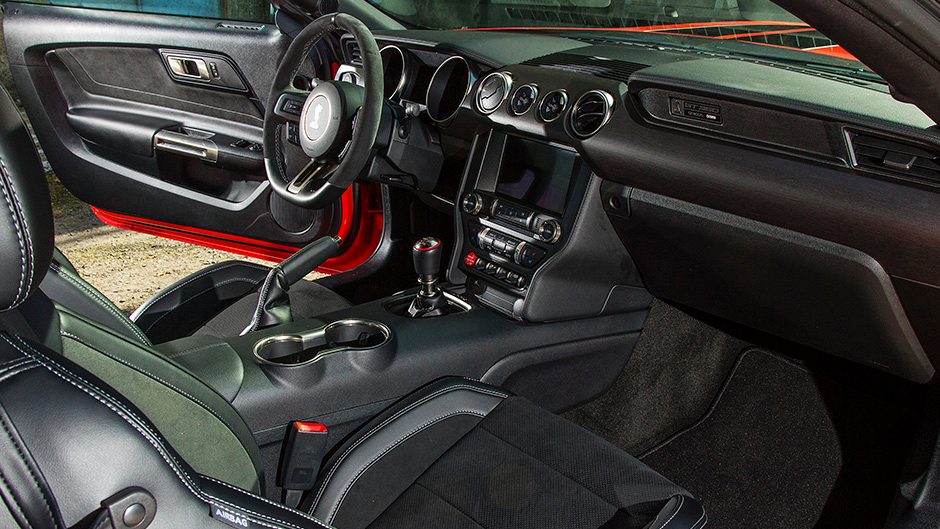
Gone is that initial lean on entry you get in the GT, and it starts carving its way through bends with better intent. The big tyres haven’t robbed the steering of its interaction, and while it’s not overly quick (in fact the steering ratio is the same as the GT’s), it gets itself turned in sharply, and it hangs in there, the front end grip hardly taxed on road. The back end too is nicely compliant, and gets the power down when you ask the question. Brakes too are strong performers, with a better pedal feel and much more bite and staying power than with your average GT.
It’s definitely an involving drive, one for the purist with few driver aids, not even a rev blipper to help with the downshifts, but the pedals are well placed for easy heel and toeing. Not so easy however is getting it to hook up quickly off the mark. Given the tall gearing and the peaky nature of the engine, it needs a rev happy launch to get going. The lowest setting for the launch control was 4000rpm, which was about right, but a slick road surface didn’t help the cause so it was scrambling from the get go. An 80-120km/h time of 2.3 sec is respectable given it was still struggling for grip as we hooked into second gear.
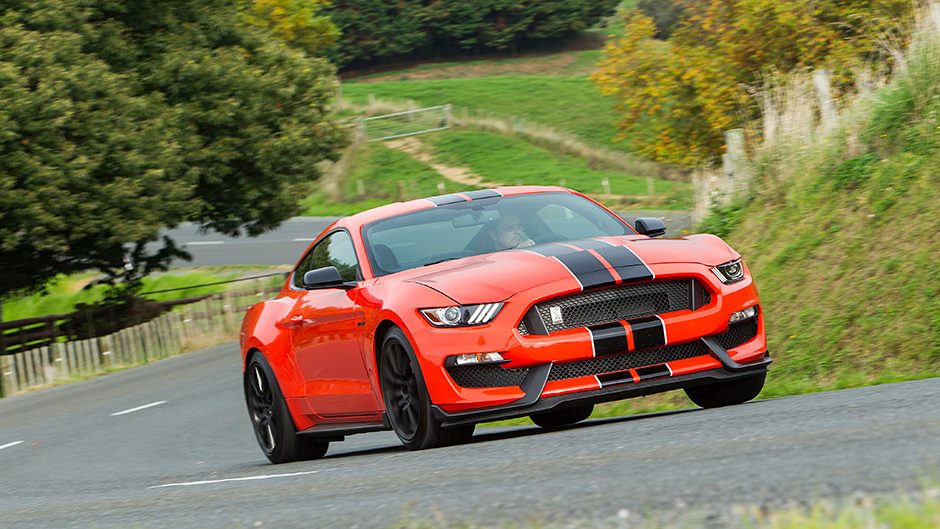
This is another vehicle for sale at 4Guys in Hamilton, one of a few GT350s they have for sale at $139,950. These Shelbys can be imported here as the production volume is low enough to comply with the left-hand drive permit scheme, and 350s aren’t destined for right hand drive production either. A left-hook Mustang has a more user friendly cabin than the Camaro with better all-round vision, it’s easier to get in and out of, and it doesn’t seem as wide as the Camaro either.
Other than the average steering lock due to those mammoth treads,the Shelby was easy enough to drive in traffic to be considered a daily driver. It certainly has the sharper edge that’s missing from the regular V8, and one hell of an engine, wrapped up in a usable and good looking coupe body. It’ll be a relative rarity among Mustangs, and there’s no wait for delivery but whether it’s worth almost twice as much a regular GT is something of a moot point. It sure is a great car to drive though
| Model | Ford Shelby GT350 | Price | $139,900 |
| Engine | 5163cc, V8, EFI, 392kW/580Nm | Drivetrain | 6-speed manual, rear-wheel drive |
| Fuel Use | 14.7L/100km | C02 Output | 341g/km |
| 0-100km/h | 4.78sec | Weight | 1723kg |


